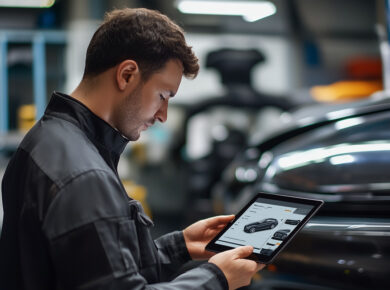Restoring a Salvage Car: A Step-by-Step Guide
Restoring a Salvage Car: A Step-by-Step Guide
Restoring a salvage car can be an incredibly rewarding project, allowing you to rebuild a vehicle to your exact specifications and potentially save a significant amount of money. However, it’s crucial to approach this endeavor with a realistic understanding of the challenges involved. This guide will walk you through the restoration process, from initial evaluation to final inspection.
1. Vehicle Evaluation:
- Thorough Inspection: Begin with a comprehensive inspection of the salvage car. Assess the extent of the damage, paying close attention to the frame, engine, transmission, and electrical systems.
- Gather Information: Obtain as much information as possible about the vehicle’s history, including the accident report and any available repair estimates.
- Determine the Scope of Work: Based on your inspection and research, determine the scope of the restoration project. Will it be a full ground-up rebuild, or will you focus on specific areas?
2. Budget Planning:
- Estimate Repair Costs: Create a detailed budget that includes the cost of parts, tools, consumables, and any necessary professional labor.
- Factor in Unexpected Expenses: Be prepared for unexpected costs that may arise during the restoration process.
- Set a Realistic Budget: Determine a realistic budget and stick to it as closely as possible.
3. Sourcing Parts:
- OEM vs. Aftermarket: Research and compare prices for OEM (Original Equipment Manufacturer) and aftermarket parts.
- Find Reliable Suppliers: Identify reputable sources for parts, such as salvage yards, online retailers, and local auto parts stores.
- Consider Used Parts: Explore the option of using used parts to save costs.
4. Gathering Tools and Equipment:
- Essential Tools: Acquire the necessary tools for the restoration, including wrenches, sockets, screwdrivers, and a variety of other specialized tools.
- Workspace: Secure a suitable workspace for your project, such as a garage or a well-ventilated area.
5. Restoration Process:
- Disassembly: Begin by carefully disassembling the vehicle, documenting the process as you go.
- Repair or Replace: Repair or replace damaged components according to your plan.
- Reassembly: Reassemble the vehicle, ensuring all components are properly installed and functioning correctly.
6. Testing and Inspection:
- Road Test: Once the vehicle is reassembled, conduct a thorough road test to ensure proper operation.
- Safety Inspection: Have the vehicle inspected by a qualified mechanic to ensure it meets all safety standards.
7. Legal and Regulatory Compliance:
- Obtain Necessary Permits: Ensure you have all the necessary permits and licenses required for the restoration and operation of the vehicle.
- Comply with Local Regulations: Familiarize yourself with and comply with all relevant local regulations regarding salvage vehicle restoration.
8. Documentation:
- Maintain Records: Keep detailed records of all parts purchased, labor performed, and expenses incurred throughout the restoration process.
Tips for Success:
- Seek Professional Advice: Consult with experienced mechanics or restoration specialists for guidance and advice.
- Take Your Time: Don’t rush the restoration process. Take your time to ensure each step is done correctly.
- Enjoy the Journey: Remember to enjoy the process of rebuilding the vehicle and the satisfaction of creating something unique.
Disclaimer: This information is provided for general guidance only and should not be considered professional advice. Always consult with qualified professionals for specific recommendations and to ensure compliance with all applicable laws and regulations.
I hope this guide provides you with a solid foundation for your salvage car restoration project.
Would you like to delve deeper into a specific aspect of the restoration process, such as finding a reputable salvage yard or dealing with insurance companies regarding salvage titles?











